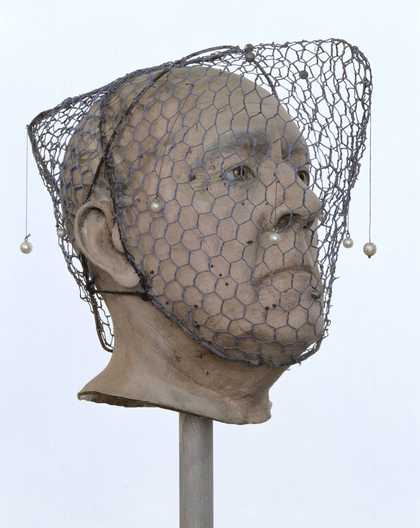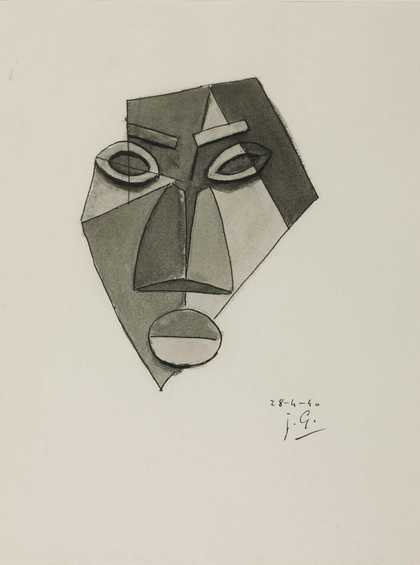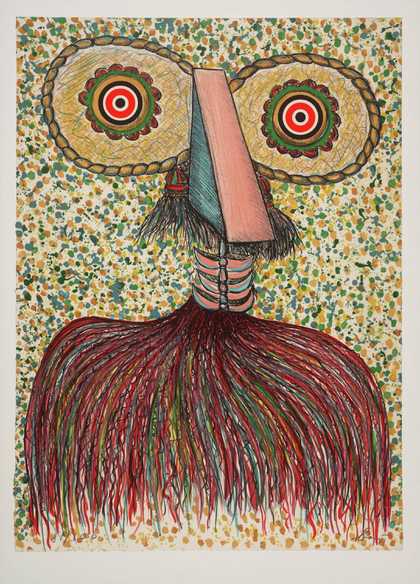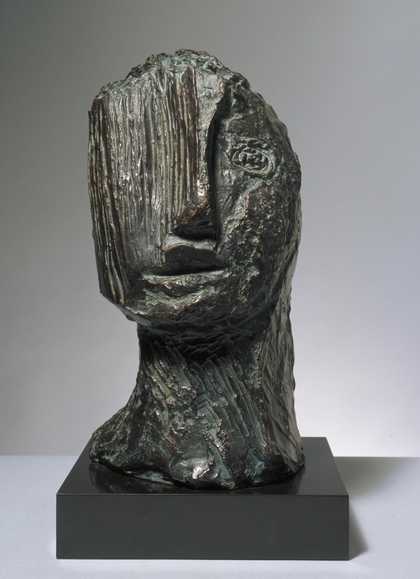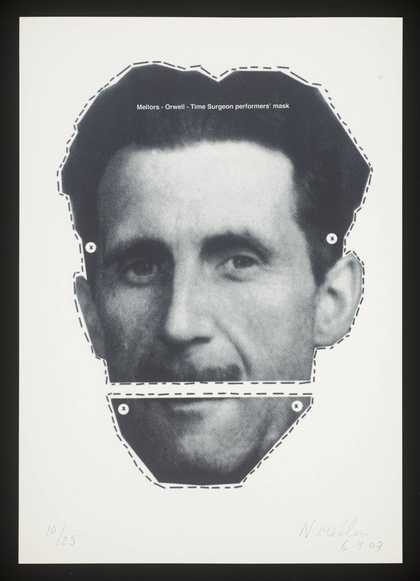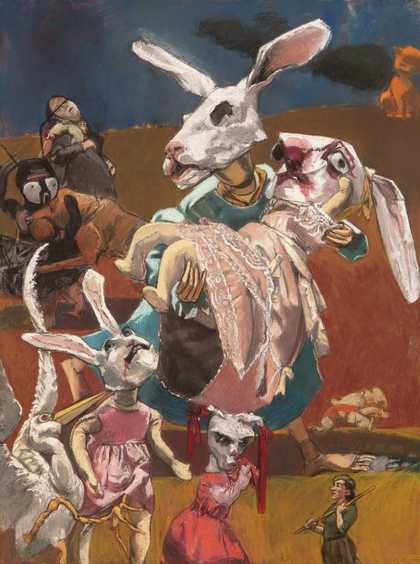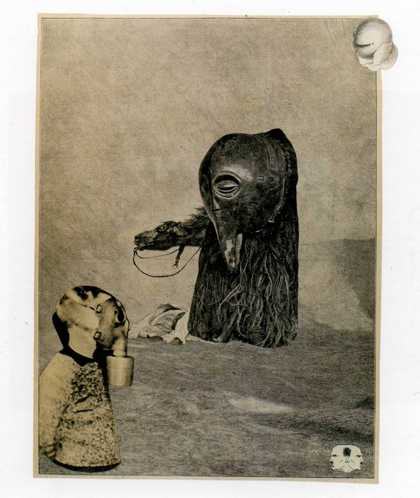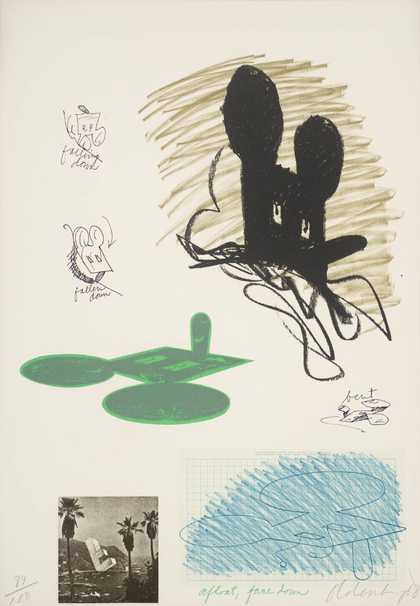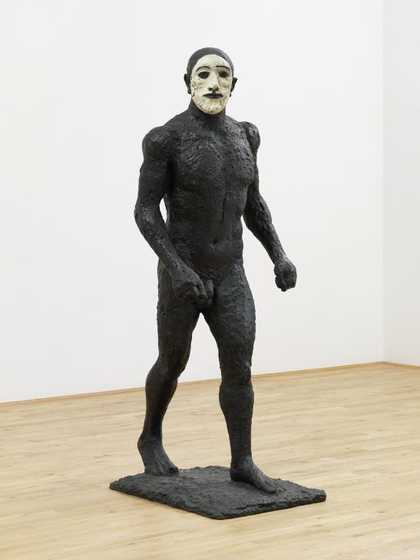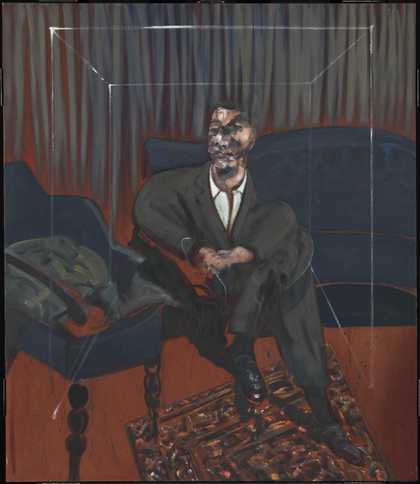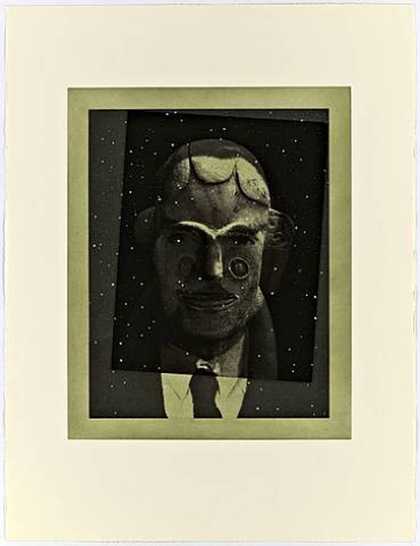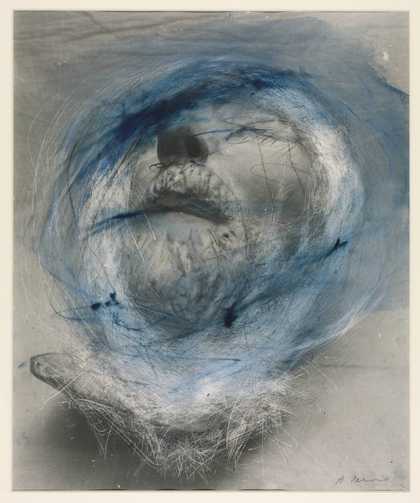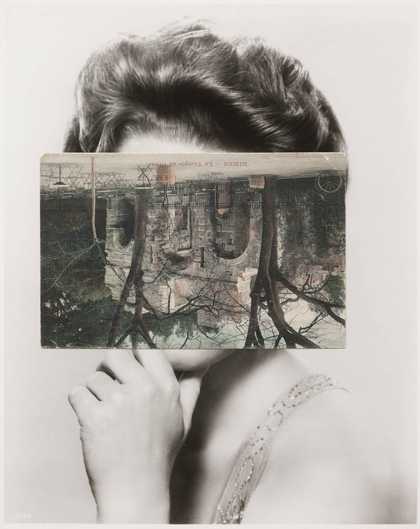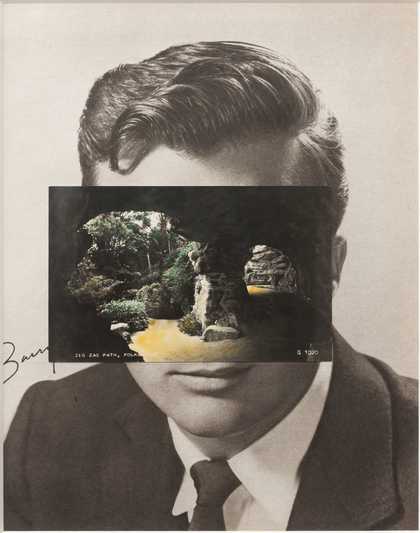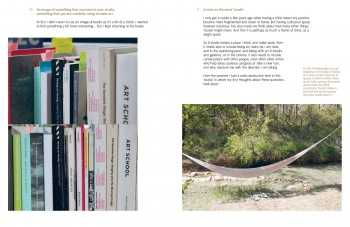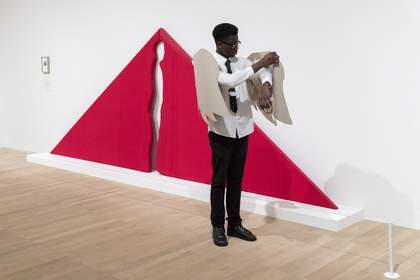A mask conceals something from view. It can be worn to cover all or part of the face: to disguise, hide, protect, amuse or frighten others. It may be something we metaphorically wear to present ourselves to the world but used to hide what we really think or feel.
Masks don’t have to be things people wear, they can also hide or disguise objects or even buildings (like camouflage!) Masking could also refer to the process of covering or protecting areas of image or surface in order to build up layers or create hard edges within a painting.
MASKS abstracted
Pablo Picasso famously said at the beginning of the twentieth century:
A head is a matter of eyes, nose, mouth, which can be distributed in any way you like.
He refers to a museum visit where he saw masks and sculptures created by artists from non-Western cultures. These masks, with their flat angled planes, were one of the main inspirations for cubism. They also had a profound impact on the way Picasso painted faces from then on. Many other artists were also inspired by the raw power of these masks. These include German Expressionist artists such as Karl Schmidt-Rottluff and Henry Moore.
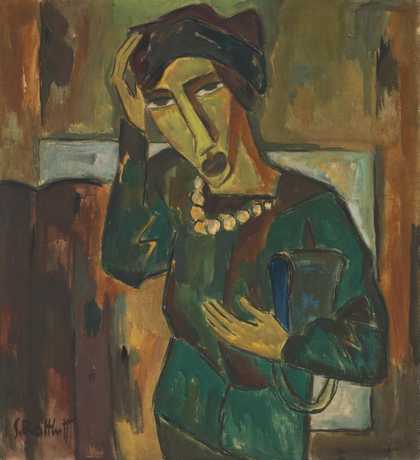
Karl Schmidt-Rottluff
Woman with a Bag (1915)
Tate
Masks as disguise
Masks are a way of disguising who we are. Although often worn as fancy dress or to carnivals, they can also have sinister connotations.
Max Beckmann and C.R.W. Nevinson painted party scenes, as in the works below. The masks worn by the figures, as well as the claustrophobic spaces they are painted in, create a menacing atmosphere.
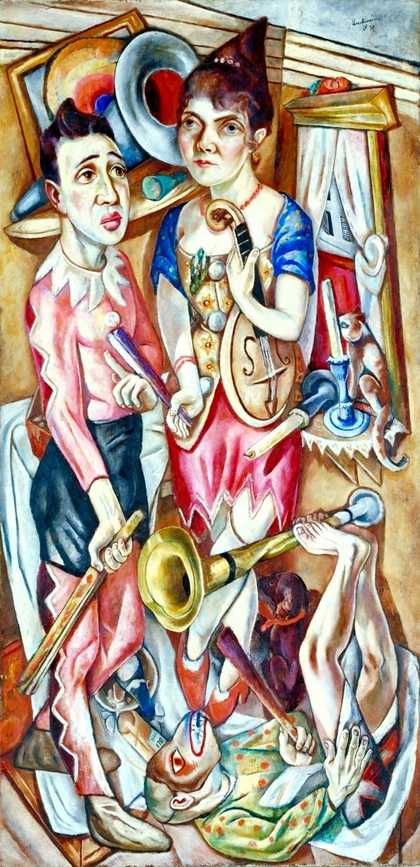
Max Beckmann
Carnival (1920)
Tate
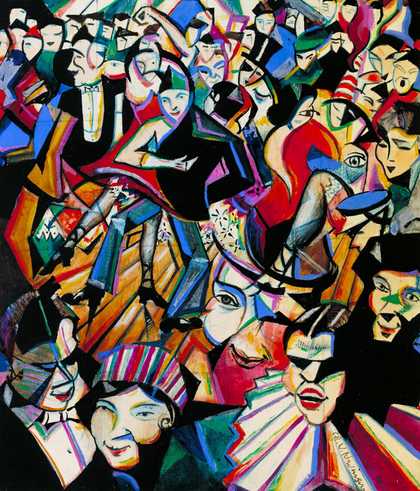
Christopher Richard Wynne Nevinson
Dance Hall Scene (c.1913–14)
Tate
Masks can be worn by people to protect their identities as they carrying out criminal or subversive activities. A main source of inspiration for artist Sidney Nolan was the legend of nineteenth century Australian outlaw and folk hero Ned Kelly. Ned was the leader of a gang of daring bank robbers who famously wore metal body armour. Nolan always depicts him in a distinctive square metal mask. The Guerrilla Girls are an anonymous group of artists who protest against sexism and racism in the art world. They demonstrate at museums and other art events and put up posters that raise awareness of discrimination. They use false names and wear gorilla masks to hide their identities.

Guerrilla Girls
Guerrilla Girls Review The Whitney (1987)
Tate
As well as protecting a real identity, masks allow people to become someone else. in her video Confess All On Video. Don’t Worry You Will Be in Disguise. Intrigued? Call Gillian Version II 1994, Gillian Wearing gets people to reveal their secret thoughts and desires while disguised. As well as empowering them to share things they normally wouldn’t, it allows them to make up lies about themselves, knowing they would never be found out! Cindy Sherman masks herself as other ‘types’ of women in her self-portrait photographs in order to explore stereotypes. She uses pose, dress, expression and make-up to create her disguises.
Rebecca Horn also created masks that, in a way, allowed her to become someone else. Pencil Mask and Cockatoo Mask belong to a series of wearable body sculptures – or body extensions – the artist made which allow the wearer to interact with their environment (and with others) in new ways. Pencil Mask, transforms the wearer’s head into an instrument for drawing. Cockfeather Mask was made to touch the face of a person standing in front of the wearer. This creates a sense of intimacy and tenderness but also of tension.
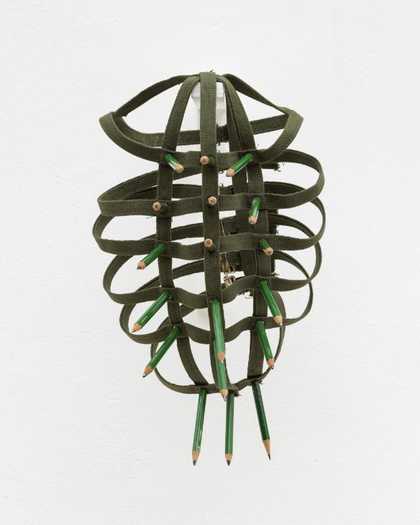
Rebecca Horn
Pencil Mask (1972)
Tate

Rebecca Horn
Cockfeather Mask (1973)
Tate
It isn’t only people that can be masked in order to disguise their true nature. In the 1920s surrealist artist Man Ray masked everyday objects by wrapping them in cloth. This had the effect of making the objects mysterious, altering their function and purpose. In one work, a sewing machine becomes a mysterious bulk. Christo and Jean-Claude used cloth wraps to mask the appearance, and explore the forms of, iconic landscapes and buildings.
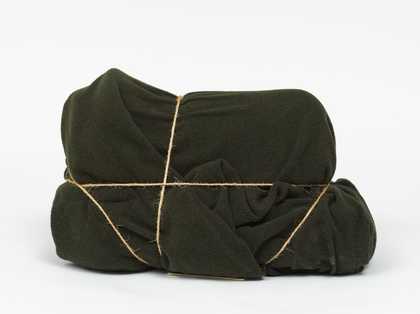
Man Ray
L’Enigme d’Isidore Ducasse (1920, remade 1972)
Tate
Masks that reveal more than they hide!
Masks don’t necessarily have to be things we wear in order to hide who we are. They can be the face we present to the world. Marlene Dumas explores sexuality and desire, and references images of prostitution and pornography in her Magdalena series. The faces of her naked female figures look vulnerable and like masks as they stare out of the paintings.
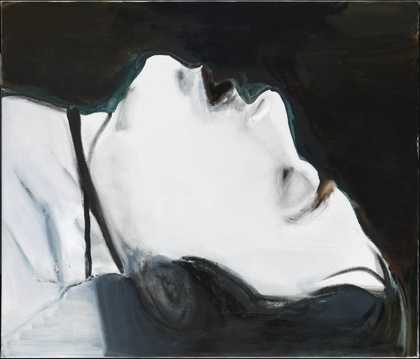
Marlene Dumas
Stern (2004)
Tate
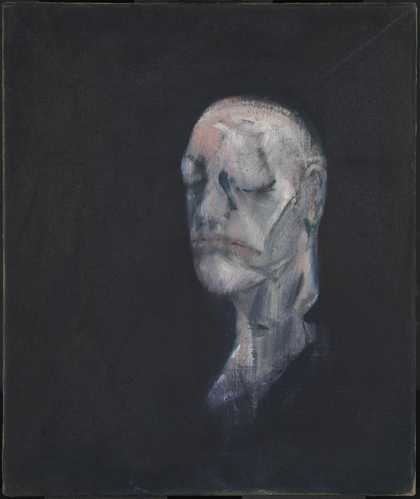
Francis Bacon
Study for Portrait II (after the Life Mask of William Blake) (1955)
Tate
The faces of Francis Bacon’s tortured figures, often confined and isolated in boxy structures, look like grotesque masks contorted and grimacing. Rather than portraits that represent the features of individuals, his work can be seen to reflect the human condition. Bacon also painted the death mask of poet and visionary William Blake. The painting is built up with delicate layers of paint against a rich black ground. The broad strokes of pink and mauve paint suggest the wax of the mask as well as human flesh.
Eileen Agar creates a sense of angst with her blind-folded head, Angel of Anarchy. Its beads, feathers and silk evoke evening dress and glamour. But the blindfold hides any obvious features and makes the head a sinister omen. Agar said she wanted the work to be ’malign’. Made in the late 1930s when World War seemed inevitable, it symbolised the sense of uncertainty Agar felt about the future.
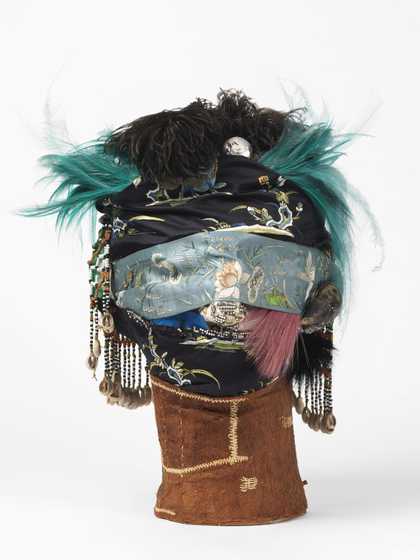
Eileen Agar
Angel of Anarchy (1936–40)
Tate
Masks feature a lot in the work of John Stezaker. Masks feature a lot in the work of John Stezaker. He collages one image over another, which masks the image underneath and suggests a new meaning to the image on top. For his Masks series he places postcards of landscape features over publicity portraits of actors from the 1940s and 1950s. The facial features are covered by the collage. The over-laid image doesn’t only hide – it also seems to reveal. The eyes are substituted with blankness or holes from landscape scenes – dark and empty or leading into other spaces. This creates a disturbing sensation of seeing other worlds, as well as skulls, beneath the features of the people in what used to be glamorous photos.
…when the mask slips
Every day we are bombarded with images of people. From celebrity shots to selfies the photographs are consciously posed and carefully managed in order to present an image of people as they want the world to see them. But what about when the mask slips? Artist Paul Graham uses photography as a means to exploring the ways in which people and societies conceal things. With his Television Portraits he gets rid of much of the masking which portraiture usually involves. He photographed people in private settings doing ordinary things – like watching television. They appear unguarded and unaware of his presence. This has resulted in images that reveal aspects of people not normally on public view.
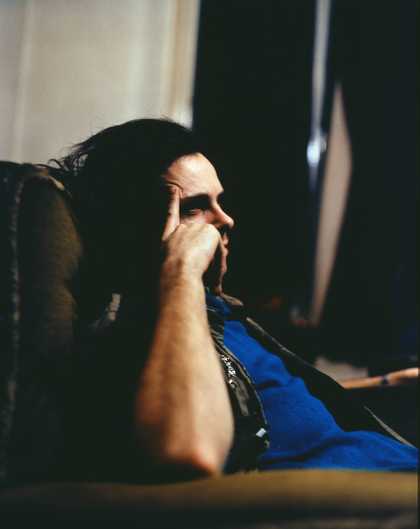
Paul Graham
Television Portrait (Jack, Bradford) (1989)
Tate
© Paul Graham; courtesy Pace and Pace/MacGill Gallery, New York
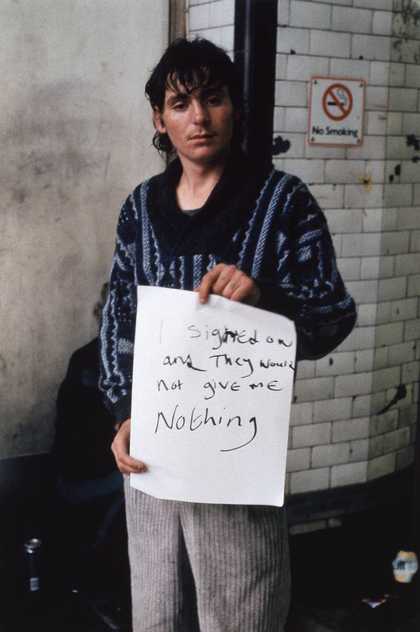
Gillian Wearing CBE
‘I signed on and they would not give me nothing’ (1992–3)
Tate
© Gillian Wearing, courtesy Maureen Paley/ Interim Art, London
For her series of photographs, Signs that Say What You Want Them To Say and Not Signs that Say What Someone Else Wants You To Say 1992-3, Gillian Wearing got passers-by to write down what they were thinking. The people in the photographs stare at the camera with impassive mask-like faces that don’t give much away (the sort of faces most people ‘wear’ when they are in public). But the messages they hold allow us to peep behind those masks and find out a little about their thoughts, worries and personal situations.
HAVE A GO!
We’ve pulled together some ideas to help you get started exploring masks and art:
- Explore the shapes, forms and textures of masks. If you have the chance, visit a museum that has an ethnological collection and look at their masks. (The British Museum has a large selection of masks on their website). Use sketches, photographs and notes to capture details you find interesting. Look at the work of Picasso, the German Expressionist artists, Henry Moore, and Caroline Achaintre to see how they have used these masks as a starting point to develop their own responses.
- Use distortion (see artworks by Francis Bacon and Arnulf Rainer) to explore how faces can be masks that express emotions, pain or feelings. Or experiment with collage (like John Stezaker) to suggest layers of different meanings in portraits.
- Think about masks as a disguise. What happens when you cover up your face or parts of your face? How does it make you look? (Mysterious? Suspicious?) How might other people respond to you? You could try walking around your school with a mask on and photograph or video the reactions of other people! (Look up Gillian Wearing’s video piece Homage to the Woman With the Bandaged Face Who I Saw Yesterday Down Walworth Road, 1995).
- Cindy Sherman explored stereotypes by making herself look like different ‘types’ of women as presented in the media. What happens if you make yourself look like someone else? Do you feel different? Does it make you behave differently?


